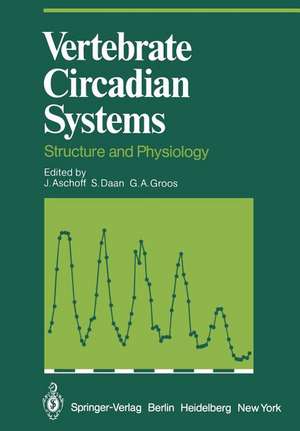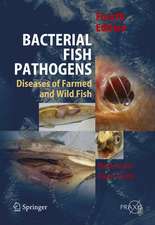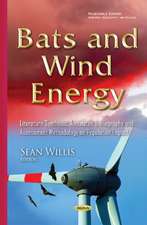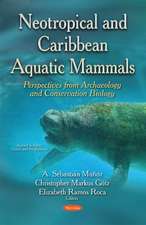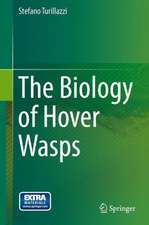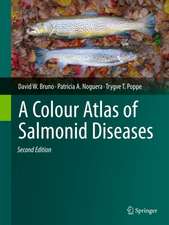Vertebrate Circadian Systems: Structure and Physiology: Proceedings in Life Sciences
Editat de J. Aschoff, S. Daan, G. A. Groosen Limba Engleză Paperback – 19 ian 2012
Din seria Proceedings in Life Sciences
- 15%
 Preț: 646.75 lei
Preț: 646.75 lei - 18%
 Preț: 952.26 lei
Preț: 952.26 lei - 15%
 Preț: 637.28 lei
Preț: 637.28 lei - 18%
 Preț: 960.61 lei
Preț: 960.61 lei - 15%
 Preț: 648.24 lei
Preț: 648.24 lei - 15%
 Preț: 632.70 lei
Preț: 632.70 lei - 15%
 Preț: 654.43 lei
Preț: 654.43 lei - 15%
 Preț: 635.80 lei
Preț: 635.80 lei - 18%
 Preț: 959.50 lei
Preț: 959.50 lei - 15%
 Preț: 650.37 lei
Preț: 650.37 lei - 15%
 Preț: 636.45 lei
Preț: 636.45 lei - 15%
 Preț: 644.49 lei
Preț: 644.49 lei - 15%
 Preț: 639.08 lei
Preț: 639.08 lei - 15%
 Preț: 641.53 lei
Preț: 641.53 lei - 15%
 Preț: 664.61 lei
Preț: 664.61 lei - 5%
 Preț: 721.77 lei
Preț: 721.77 lei - 15%
 Preț: 652.49 lei
Preț: 652.49 lei - 5%
 Preț: 718.82 lei
Preț: 718.82 lei - 15%
 Preț: 636.80 lei
Preț: 636.80 lei - 15%
 Preț: 646.43 lei
Preț: 646.43 lei - 15%
 Preț: 649.22 lei
Preț: 649.22 lei - 18%
 Preț: 1390.11 lei
Preț: 1390.11 lei - 18%
 Preț: 956.33 lei
Preț: 956.33 lei - 15%
 Preț: 643.48 lei
Preț: 643.48 lei - 15%
 Preț: 641.38 lei
Preț: 641.38 lei - 15%
 Preț: 642.03 lei
Preț: 642.03 lei - 15%
 Preț: 640.24 lei
Preț: 640.24 lei - 15%
 Preț: 651.34 lei
Preț: 651.34 lei - 15%
 Preț: 649.39 lei
Preț: 649.39 lei - 5%
 Preț: 714.06 lei
Preț: 714.06 lei - 15%
 Preț: 640.37 lei
Preț: 640.37 lei - 15%
 Preț: 664.11 lei
Preț: 664.11 lei -
 Preț: 492.59 lei
Preț: 492.59 lei - 18%
 Preț: 945.47 lei
Preț: 945.47 lei - 15%
 Preț: 647.73 lei
Preț: 647.73 lei - 18%
 Preț: 942.01 lei
Preț: 942.01 lei - 18%
 Preț: 943.57 lei
Preț: 943.57 lei - 15%
 Preț: 639.41 lei
Preț: 639.41 lei - 5%
 Preț: 726.15 lei
Preț: 726.15 lei - 15%
 Preț: 641.03 lei
Preț: 641.03 lei - 5%
 Preț: 707.33 lei
Preț: 707.33 lei - 15%
 Preț: 647.27 lei
Preț: 647.27 lei - 15%
 Preț: 638.57 lei
Preț: 638.57 lei - 15%
 Preț: 645.79 lei
Preț: 645.79 lei - 15%
 Preț: 654.12 lei
Preț: 654.12 lei - 15%
 Preț: 652.31 lei
Preț: 652.31 lei - 18%
 Preț: 946.72 lei
Preț: 946.72 lei - 15%
 Preț: 637.28 lei
Preț: 637.28 lei - 5%
 Preț: 718.46 lei
Preț: 718.46 lei - 15%
 Preț: 653.33 lei
Preț: 653.33 lei
Preț: 951.14 lei
Preț vechi: 1159.94 lei
-18% Nou
Puncte Express: 1427
Preț estimativ în valută:
181.100€ • 190.53$ • 150.59£
181.100€ • 190.53$ • 150.59£
Carte tipărită la comandă
Livrare economică 07-21 aprilie
Preluare comenzi: 021 569.72.76
Specificații
ISBN-13: 9783642686535
ISBN-10: 3642686532
Pagini: 384
Ilustrații: XIV, 366 p. 31 illus.
Dimensiuni: 170 x 244 x 20 mm
Greutate: 0.61 kg
Ediția:Softcover reprint of the original 1st ed. 1982
Editura: Springer Berlin, Heidelberg
Colecția Springer
Seria Proceedings in Life Sciences
Locul publicării:Berlin, Heidelberg, Germany
ISBN-10: 3642686532
Pagini: 384
Ilustrații: XIV, 366 p. 31 illus.
Dimensiuni: 170 x 244 x 20 mm
Greutate: 0.61 kg
Ediția:Softcover reprint of the original 1st ed. 1982
Editura: Springer Berlin, Heidelberg
Colecția Springer
Seria Proceedings in Life Sciences
Locul publicării:Berlin, Heidelberg, Germany
Public țintă
ResearchCuprins
1 Introduction.- 1.1 The Search for Principles of Physiological Organization in Vertebrate Circadian Systems.- 1.2 Zeitgebers, Entrainment, and Masking: Some Unsettled Questions.- 2 Pathways of Zeitgeber Signals.- 2.1 Comparative Aspects of Retinal and Extraretinal Photosensory Input Channels Entraining Endogenous Rhythms.- 2.2 Neuroanatomical Pattern of Endocrine and Oscillatory Systems of the Brain: Retrospect and Prospect.- 2.3 Unspecific Optic Fibres and Their Terminal Fields.- 2.4 Characteristics of the Interaction Between the Central Circadian Mechanism and the Retina in Rabbits.- 3 The Role of the Nucleus Suprachiasmaticus.- 3.1 Physiological Models of the Rodent Circadian System.- 3.2 Neuroanatomical Organization and Connections of the Suprachiasmatic Nucleus.- 3.3 CNS Structures Controlling Circadian Neuroendocrine and Activity Rhythms in Rats.- 3.4 The Neurophysiology of the Mammalian Suprachiasmatic Nucleus and Its Visual Afferents.- 3.5 Neurophysiological Studies of the SCN in the Rat and in the Java Sparrow.- 3.6 Neural Mechanisms in Avian Circadian Systems: Hypothalamic Pacemaking Systems.- 3.7 Limits of Entrainment to Periodic Feeding in Rats with Suprachiasmatic Lesions.- 4 The Role of the Pineal Organ.- 4.1 Phase Responses and Characteristics of Free-Running Activity Rhythms in the Golden Hamster: Independence of the Pineal Gland.- 4.2 Circadian and Infradian Activity Rhythms in the Mammalian Pineal Body.- 4.3 Electrophysiology of the Mammalian Pineal Gland: Evidence for Rhythmical and Non-Rhythmical Elements and for Magnetic Influence on Electrical Activity.- 4.4 Circadian Rhythms of the Isolated Chicken Pineal in Vitro.- 4.5 Endogenous Oscillator and Photoreceptor for Serotonin N-Acetyltransferase Rhythm in Chicken Pineal Gland.- 5 Systemic Aspects.-5.1 Role of Hormones in the Circadian Organization of Vertebrates.- 5.2 The Neuropharmacology of Circadian Timekeeping in Mammals.- 5.3 Entraining Agents for the Circadian Adrenocortical Rhythm in the Rat.- 5.4 Splitting of the Circadian Rhythm of Activity in Hamsters.- 5.5 Phase-Response Curves and the Dual-Oscillator Model of Orcadian Pacemakers.- 5.6 Orcadian Control of Body Temperature in Primates.- 6 The Circadian Sleep-Wake Cycle.- 6.1 Circadian and Sleep-Dependent Processes in Sleep Regulation.- 6.2 Sleep Circadian Rhythms in the Rat: One or Two Clocks?.- 6.3 Sleep ECoG Rhythm in the High Mesencephalic Rat.- 6.4 Interaction Between the Sleep-Wake Cycle and the Rhythm of Rectal Temperature.- 6.5 The Phase-Shift Model of Spontaneous Internal Desynchronization in Humans.- 7 Photoperiodic Phenomena Related to the Circadian System.- 7.1 Physiology of Photoperiodic Time-Measurement.- 7.2 Pineal Influences on Circannual Cycles in European Starlings: Effects Through the Circadian System?.- 7.3 Complex Control of the Circadian Rhythm in N-Acetyltransferase Activity in the Rat Pineal Gland.- 7.4 The Critical Photoperiod in the Djungarian Hamster Phodopus sungorus.- 8 General and Functional Aspects.- 8.1 Circadian Contributions to Survival.- 8.2 Daily Temporal Organization of Metabolism in Small Mammals: Adaptation and Diversity.- 8.3 Characteristics and Variability in Entrainment of Circadian Rhythms to Light in Diurnal Rodents.- 8.4 Functional Significance of Daily Cycles in Sexual Behavior of the Male Golden Hamster.
